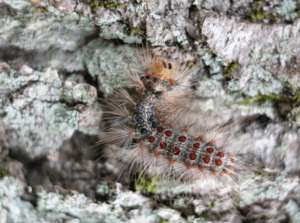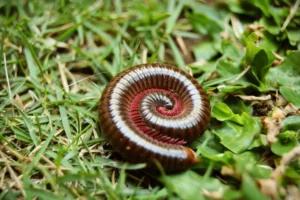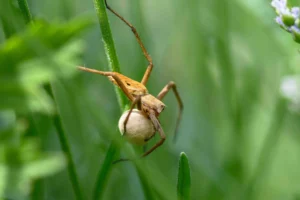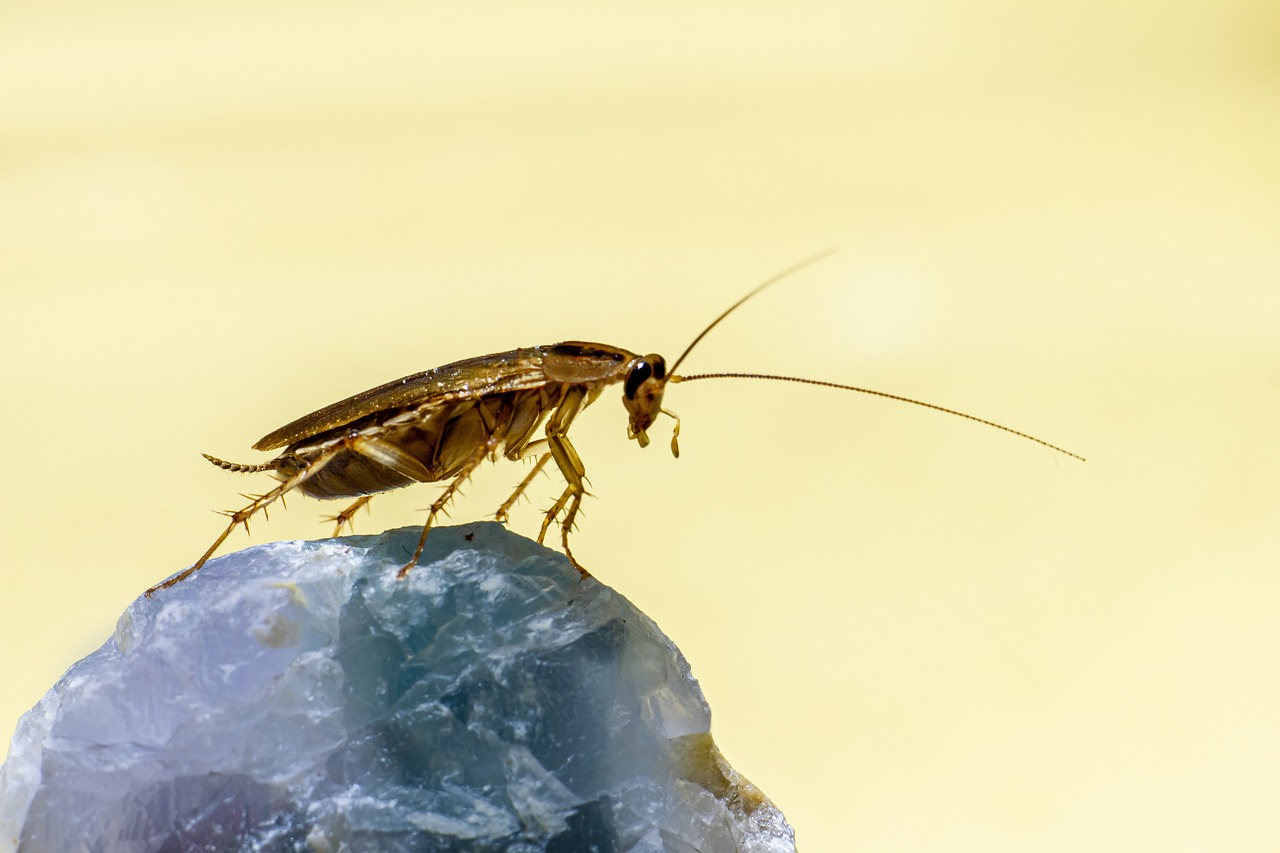
American Cockroach vs German Cockroach: A Complete Comparison Guide
American Cockroach vs German Cockroach: A Complete Comparison Guide
Welcome to our guide on American cockroach vs. German cockroach. These two cockroach species, while both unwelcome, differ significantly in appearance, behavior, and health risks. This article will explore their distinct physical characteristics, preferred habitats, and the specific health concerns they pose. By understanding these differences, you can better address infestations and implement effective cockroach pest control strategies for your home or business.
Where Do Cockroaches Come From?
German cockroaches originate from Southeast Asia. They thrive in warm, humid environments, often found in homes, restaurants, and hospitals. Their preference for indoor settings and ability to reproduce rapidly make them common pests in human dwellings.
American cockroaches are native to Africa but have spread globally. They prefer outdoor environments like sewers and under debris, but they can also invade homes, especially in warmer climates. They are more adaptable to various conditions than German cockroaches and are known for their larger size and strong flying capability.
How to Identify German vs American Cockroaches?
American cockroaches are larger, reaching about 1.5 to 2 inches in length, and are reddish-brown with a yellowish border around the thorax. They have a more robust body and long, slender legs, with wings that allow them to fly short distances. In contrast, German cockroaches are smaller, about 0.5 to 0.6 inches long, and are light brown to tan with two parallel dark stripes running from the head to the base of the wings. They have a narrower, more streamlined body and shorter wings that do not aid in flight.
Signs of a cockroach infestation include seeing live cockroaches, finding shed exoskeletons, discovering egg cases (oothecae), noticing a musty odor, and spotting fecal droppings resembling coffee grounds or black pepper. Infestations may also be indicated by unusual gnaw marks on food packaging or other materials.
Habitat Differences between a German and American Cockroach
American cockroaches favor outdoor environments like sewers, drains, and piles of debris, thriving in warm, damp conditions. They are often found in basements, crawl spaces, and around the foundation of buildings. Indoors, they prefer dark, secluded areas such as behind appliances or in wall voids.
German cockroaches, however, are typically found indoors. They thrive in warm, humid environments such as kitchens and bathrooms, where food and moisture are readily available. Common locations include under sinks, inside cabinets, and behind appliances. They are highly adaptable and can also be found in commercial settings like restaurants and hospitals, where their ability to reproduce rapidly makes them a persistent problem.
Infestation and Reproduction Rates of American vs German Cockroaches
German cockroaches reproduce rapidly, with a female producing an egg case, or ootheca, containing 30 to 40 eggs every few weeks. This high reproductive rate allows infestations to grow quickly in a short amount of time, particularly in environments with ample food and moisture. As a result, German cockroaches can establish large populations swiftly in homes and commercial settings.
In contrast, American cockroaches reproduce at a slower rate. A female American cockroach produces fewer eggs per ootheca (around 15) and the cases are deposited in hidden areas. Although their reproductive cycle is longer, leading to slower infestation growth compared to German cockroaches, American cockroaches can still become a significant problem in suitable environments. Their larger size and preference for outdoor or damp indoor areas can contribute to a more dispersed infestation.
Health Risks and Problems Caused by German vs American Cockroaches
Both German and American cockroaches pose significant health risks. German cockroaches are known carriers of pathogens like Salmonella and E. coli, which can cause food poisoning and gastrointestinal illnesses. Their presence in kitchens and food storage areas heightens the risk of contamination. Additionally, their body parts, saliva, and feces can trigger asthma and allergic reactions, particularly in sensitive individuals.
American cockroaches also carry disease-causing bacteria such as Salmonella and can contribute to gastrointestinal infections. They are associated with pathogens that can lead to foodborne illnesses and are known to exacerbate asthma and allergies through their body parts, feces, and secretions. Their preference for damp and unsanitary environments further increases the risk of disease spread. Both species contribute to various health issues due to their ability to spread allergens and pathogens.
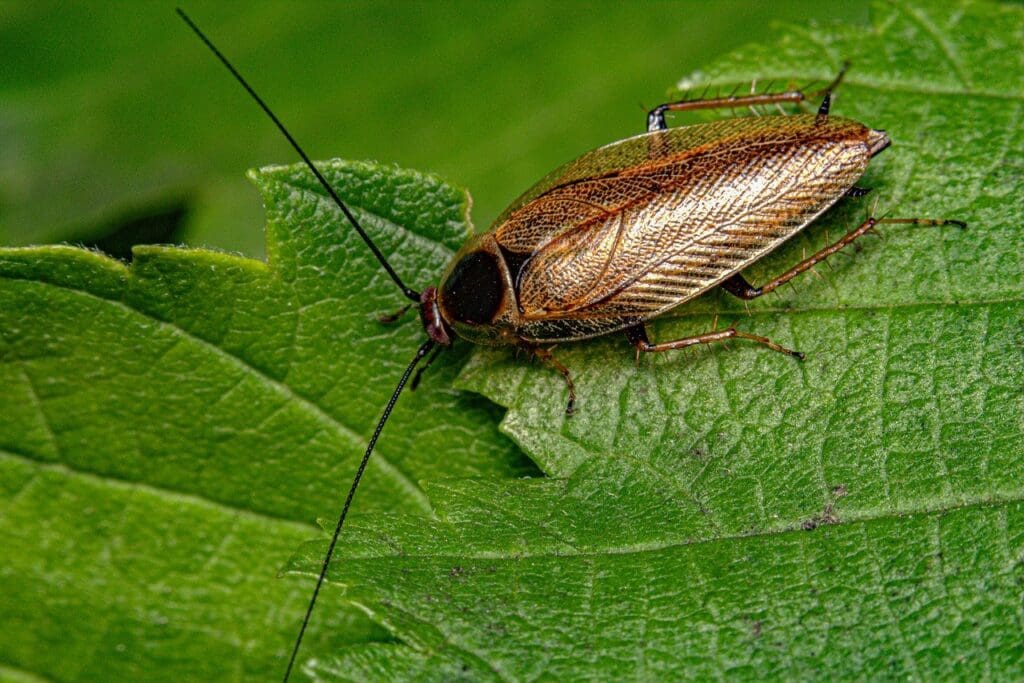
Effective Control and Prevention Methods for German and American Cockroaches
Here are some quick tips on how to get rid of cockroaches:
- Maintain Cleanliness: Keep kitchens and bathrooms clean and free of food debris. Regularly clean floors, countertops, and appliances.
- Seal Entry Points: Close gaps, cracks, and crevices around doors, windows, and plumbing to prevent cockroach entry.
- Remove Moisture: Fix leaks and reduce humidity by using dehumidifiers and ensuring proper ventilation.
- Store Food Properly: Keep food in sealed containers and avoid leaving pet food out overnight.
- Use Baits and Traps: Place cockroach baits and traps in areas where they are frequently seen to monitor and reduce populations.
- Regular Inspection: Conduct regular inspections of potential nesting sites, such as behind appliances and under sinks.
- Professional Pest Control: Seek professional pest control services if infestations are severe or persistent.
Understanding the differences between American cockroach vs. German cockroach is crucial for effective pest management. Both species pose significant health risks and require prompt attention. Whether dealing with infestations in a residential setting or addressing issues in commercial spaces, targeted strategies are essential. For comprehensive residential pest control or specialized commercial pest control services, it’s important to consult professionals like Twin-Boro who can tailor solutions to your specific needs. Don’t let cockroaches compromise your health and comfort- contact us today to schedule a free inspection and protect your home or business from these persistent pests.
FAQs About German and American Cockroaches
Where do German cockroaches come from?
German cockroaches originate from Southeast Asia. They have spread globally, primarily thriving in indoor environments due to their preference for warm, humid conditions.
Do German cockroaches fly?
German cockroaches have wings but do not fly. Their wings are relatively short and are used more for gliding or to aid in escaping danger rather than for sustained flight.
Do German cockroaches bite?
German cockroaches can bite, but it is rare. They may bite if food is scarce, particularly in unsanitary conditions. Their bites can cause minor irritation or allergic reactions, but they are not known for aggressive biting behavior.
Do American cockroaches fly?
Yes, American cockroaches can fly. They have well-developed wings and are capable of short flights, especially when disturbed. However, they generally prefer to stay on the ground or climb rather than fly for extended distances.
Do American cockroaches bite?
American cockroaches can bite, but it's uncommon. They may bite if food is scarce or if they feel threatened. Bites can cause minor irritation or allergic reactions, but they are not aggressive biters and typically do not pose a significant threat to humans.
What attracts American cockroaches?
American cockroaches are attracted to warmth, moisture, and food sources. They are drawn to damp, dark areas such as basements, sewers, and under debris, as well as to food spills and garbage. Their preference for these environments helps them thrive and establish infestations.




